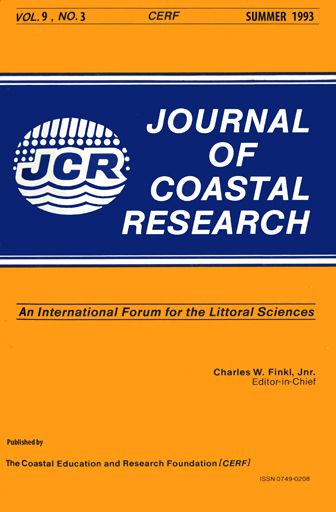Diatom Zonation in Southern Oregon Tidal Marshes Relative to Vascular Plants, Foraminifera, and Sea Level
Keywords:
Holocene sea-level changes, salt-marsh microfossils, U.S. Pacific Northwest, intertidal zonation, littoral paleoenvironments, coastal paleoseismologyAbstract
Diatom assemblages from four surface transects across estuarine marshes in southern Oregon show a three-part vertical ecologic zonation of the intertidal zone similar to zonations of foraminiferal and vascular plant assemblages. Gradual changes in the compositions of all three types of assemblages reflect gradational zone boundaries, 5 - 40 m wide. Discriminant function analysis indicates that modern mudflat, low marsh, and high marsh zones can be distinguished from one another with diatom assemblage data at three silty marshes in the middle parts of two river-dominated estuaries. However, low marsh and high marsh assemblages are less distinct from each other than are mudflat and low marsh assemblages. The compositions of vascular plant and diatom assemblages on a transect at a sandy site near the mouth of a third estuary differ from those of the silty transects. A particularly distinct diatom subzone-the marsh border subzone-is marked by a dominance of fresh-to-brackish-water diatoms in a few samples from the upper part of the high marsh and lowest part of the upland zone on all four transects. But the vertical range of the marsh border subzone is large (about 0.7 m) and its range may vary from site to site depending on the amount of freshwater seepage and runoff into marshes. The zonation of modern diatom assemblages suggests that fossil diatom assemblages, particularly those of the high marsh and marsh border subzone, will be useful in paleosea-level reconstructions.


